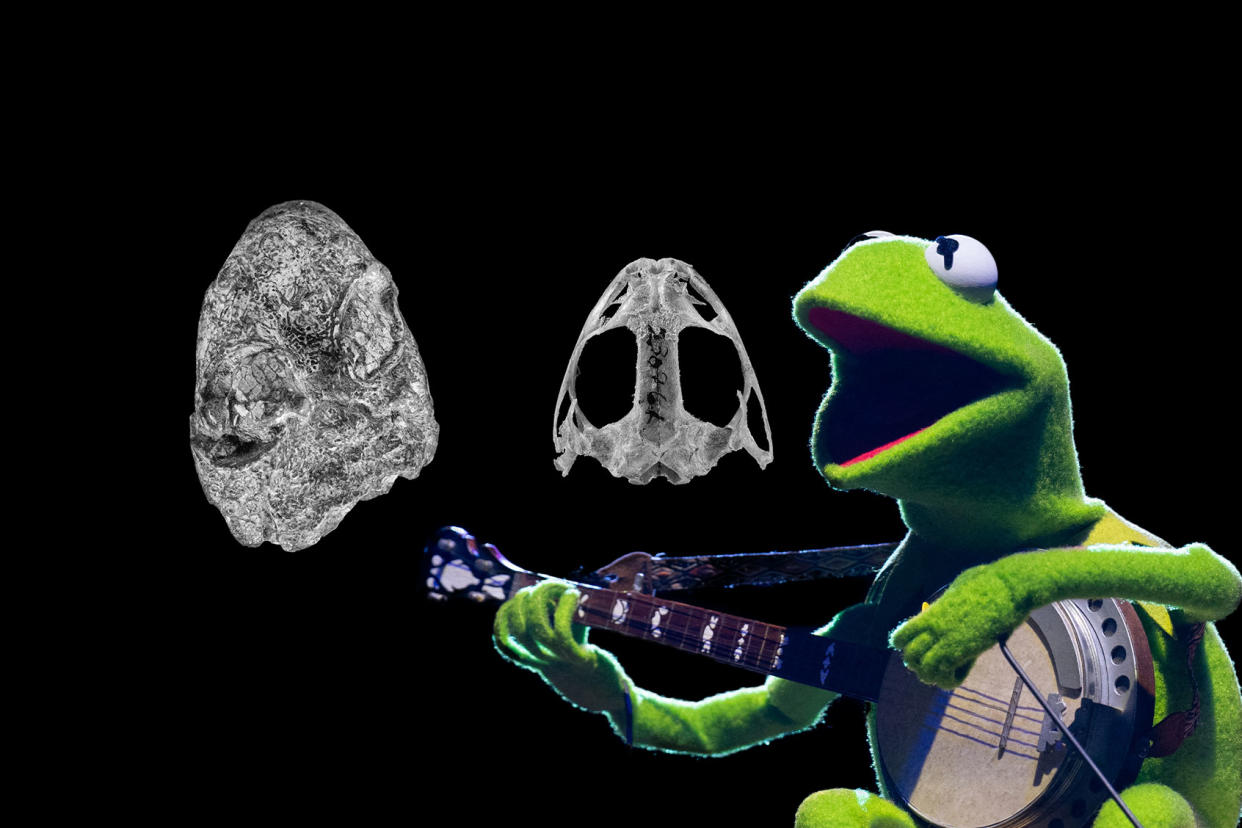Kermit the Proto-Frog? Scientists name ancient amphibian ancestor after the iconic Muppet

A recently-discovered amphibian ancestor has been named after Kermit the Frog, the ballad-crooning, pig-wooing lime green frog who headlines the Muppets. According to a new study in the Zoological Journal of the Linnean Society, Kermitops gratus was a proto-amphibian that lived 270 million years ago and possessed a skull that could fit in the palm of your hand. The fossilized bone is just over one inch long, containing well-preserved oval eye sockets. According to a press statement by researchers from the Smithsonian's National Museum of Natural History, the fossil was first discovered in Texas by their museum’s paleobiology curator, the late paleontologist Nicholas Hotton III. In 2021 postdoctoral paleontologist Arjan Mann found Hotton's skull and said that it "jumped out at me — this really well-preserved, mostly prepared skull."
The fossil was identified as a temnospondyl, a predecessor to modern amphibians that survived over a 200 million year duration spanning from the Carboniferous to the Triassic periods. K. gratus stands out in part because of its cartoonishly wide face and eyes, which reminded the scientists of the famous puppet. Yet the fossil also stands out because of the more delicate features that were preserved. As the researchers write at one point, despite losing part of the palate and braincase, "the remainder of the skull is well-preserved, even showing a full arrangement of palpebral ossicles in place." Palpebral ossicles are the tiny bones in an animal's eyelids, showing that even some of the smallest parts of the ancient Kermit's anatomy have been preserved.
“Using the name Kermit has significant implications for how we can bridge the science that is done by paleontologists in museums to the general public,” Calvin So, a doctoral student at the George Washington University and the lead author on the new paper, said.

